
|   |

|   |
|
Dance theatre Mughal-e-Azam by Nritya Upasana, Kolkata - Nita Vidyarthi e-mail: nitavidyarthi@gmail.com Photos courtesy: Kashmira Samanta October 21, 2019 It takes courage to stage the magnum opus film Mughal-E-Azam, for that matter any historical block-buster as a dance theatre, as one of the challenges is to find the exact balance between facts, aesthetics and grace. The presentation of the cult production, directed and choreographed by accomplished Bharatanatyam dancer Kashmira Samanta of Nritya Upasana, Kolkata, had lived up to this challenge successfully. This production comes in the count of a rare few, recreated as a stage adaptation after Mayuri Upadhya’s award-winning choreography of the historical dramatic first large-scale Broadway style of the 1960 film directed by K. Asif starring Madhubala, Dilip Kumar, Durga Khote, Prithviraj Kapoor and others with memorable music by Naushad. It is the love story of Prince Salim and courtesan Anarkali that agitates Emperor Akbar whose conscience is at conflict about the future of his Empire as a ruler and the role of a father. An earlier play in 1922 called ‘Anarkali’ by Imtiaz Ali on the same theme had been staged thrice but was not so familiar to people but the historical film by K. Asif, loaded with awards, remains unparalleled with glowing life worn beauty. 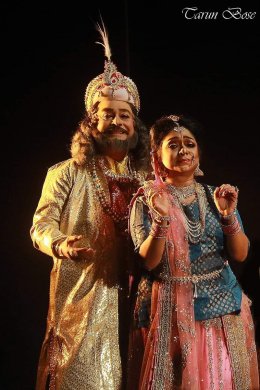 Akbar & Jodhabai 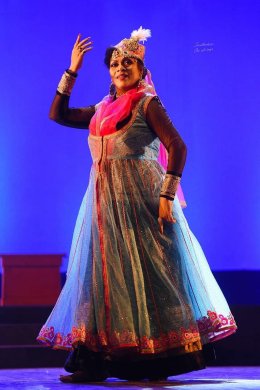 Anarkali 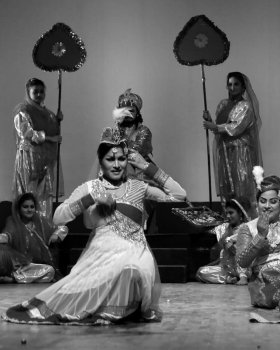 Bahar The present version of the Nritya Upasana production directed and choreographed with background music directed by Kashmira Samanta, can best be described as an integrated, lyrical and captivating interpretation of Indian classical dance movements and seamless blend of ideas with the dance form. The script by Sanjay Banerjee and Kashmira who also bears the burden of composing the dialogues was not fully on the lines of the film but nevertheless melodramatic. Kathak was essentially restricted to the execution of the Rajnarthaki (court dancer) Bahar - Nandini Sinha as Bahar being a very fine, senior Kathak dancer. And she fitted best with some of her pure dance items especially footwork as the arrogant Bahar in competitive mood with Anarkali! 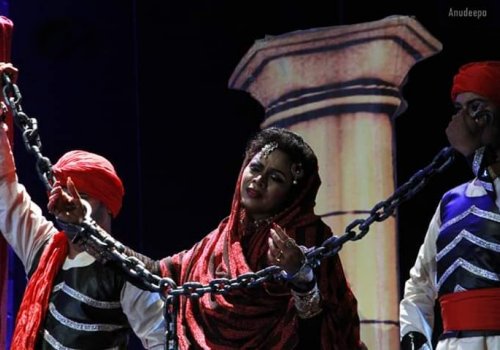 Anarkali in captivity Elaboration was visible, especially dances which were deeply involved in the labyrinthine process of the story which most of the audience already know. The scene in the opening act of the court of Akbar was spectacular and a visual pleasure of royalty and had all the details carefully placed on the sprawling stage of Rabindra Sadan with glamour and glitter. It was mounted handsomely and the exquisite set by Haradhon intensified the mood of the storyline by keeping alive the period while the director took advantage of the highly dramatic moments like Anarkali held captive, chained and sentenced to death mercilessly. Of course Kashmira, a highly skilled dancer, was at her best with her facial expressions as the tortured Anarkali at this point of the story. It was not just the style that distinguished the choreographer but it was also the ability of Kashmira as the director with a cast of 80 odd dancers, to persist with the ideas that demanded an understanding of the genre and at one level was enjoyed by the audience. 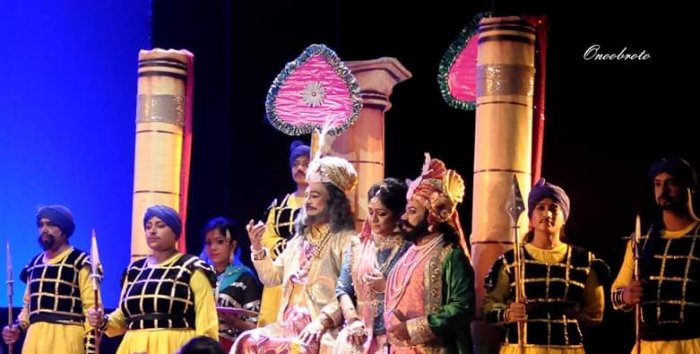 Court of Akbar  Court Almost all of the characters in K.Asif’s production were presented in outline to tell the story of Anarkali and Salim. The characters who stood out are those who asserted their energies in splendour. Bahar for instance, with her strapping presence was an appropriate choice. Kashmira as Anarkali naturally ruled the stage but Kaushik Chakravarty as Salim did not rise above mediocrity. Subhashish Bhattacharya as Akbar was dignified and strong willed, struggling to retain his honour and Sushmita Bhattacharya as Jodhabai kept his spirits up. Even though it is not fair to compare the proficiency of the characters with those of the films, nevertheless one cannot help weaknesses in execution influence opinions of the audience. Kashmira’s production had a performance text complete with sensations, gestures, rhythms and tones which had not much to do with the dramatic text. Some cult songs like “Mohe panghat pe” and “Pyar kiya to darna kya” were incorporated but the choreography had a fresh flavour and was entirely different. The background song “Bheeg jaun mein guinya” by Koushiki Bondopadhyay was mellifluous. Music by Ustad Bismillah Khan and Pandit Shivkumar Sharma had also been used in places. The costumes were dazzling in keeping with the period and lights by Dinesh Poddar related in tone with the general scheme of the drama. An entertaining production where the capacity audience sat till the end! Dr. Nita Vidyarthi is a veteran critic of performing arts and writes on dance, music and theatre in leading publications. |